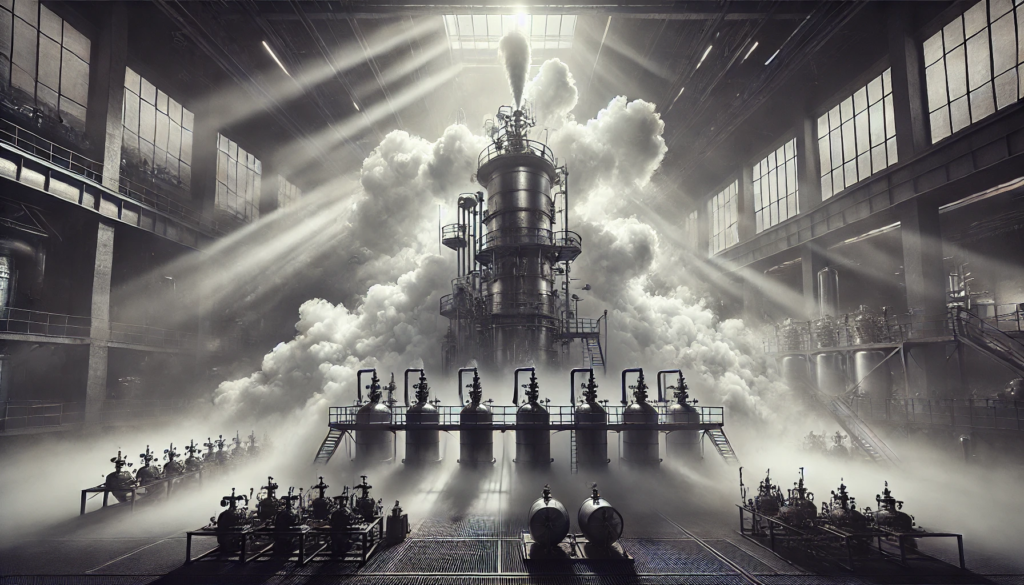The US1338343A patent represents a pivotal moment in engineering and technological innovation. Its technical ingenuity and the spirit of innovation during its creation influenced generations of engineers. This patent sparked a chain of developments, each pushing the boundaries of possibility. This article explores the origins, design, impact, and lasting relevance of US1338343A, highlighting its contribution to the evolution of modern engineering.
The Early 20th Century: A Time of Technological Revolution
The early 1900s were marked by rapid advancements in engineering and industry. The world was transitioning from the industrial revolution to a new era, where technological innovation was the key to economic growth. In this context, the development and patenting of US1338343A were seen as both timely and revolutionary. The invention that would become US1338343A addressed a specific need in an emerging industry, offering an efficient solution to problems that engineers had long struggled with. While many patents from this era have faded into obscurity, US1338343A continues to stand out due to the sheer relevance and applicability of its design.
The Problem Solved by US1338343A

The core innovation behind US1338343A was its ability to address an engineering challenge that had plagued industries for years. It introduced a solution that was both innovative and practical, demonstrating the ingenuity of the inventor. At its core, the patent aimed to improve existing mechanical processes by streamlining efficiency and reducing the complexity of previous designs. This patent’s solution had the potential to revolutionize the way certain mechanical operations were performed, providing manufacturers and engineers with a tool that would make their work significantly more effective and reliable.
The problem solved by US1338343A was not a minor one—it was a challenge that affected the productivity and performance of entire industries. Prior to its invention, companies had to rely on inefficient methods that were time-consuming and often unreliable. The breakthrough presented in US1338343A allowed industries to operate more smoothly, increasing both output and quality while reducing the cost of production.
The Technical Design Behind US1338343A
What made US1338343A truly remarkable was the technical design of the invention. The patent’s design focused on mechanical efficiency, which was a key factor for industries at the time. The inventor behind this patent showcased a deep understanding of mechanical principles, particularly in terms of how different components could interact with each other to achieve optimal results. The design was both simple and effective, which made it easy to implement in various industrial settings. However, its simplicity did not detract from its sophistication—rather, it highlighted the inventiveness of the creator, who was able to devise a solution that was both elegant and highly functional.
At the heart of the invention was a mechanism that operated with precision, minimizing the potential for error and maximizing output. By reducing the number of moving parts and increasing the reliability of each component, US1338343A solved an issue that had long hindered the efficiency of machines in its category. The design also showcased an understanding of materials science, as the inventor selected durable materials that would withstand the stresses of regular use, further enhancing the invention’s practicality and longevity.
The Role of Innovation in the Success of US1338343A
Innovation is often a product of necessity, and the need for a more efficient solution in the mechanical field led to the creation of US1338343A. The world was changing, and industries required inventions that could meet the demands of a rapidly expanding global economy. The inventor recognized an opportunity to improve existing technology and make it more adaptable to new challenges. The success of US1338343A was not just a result of its technical merits but also its ability to anticipate the needs of the market. By addressing a widespread issue in a novel way, the patent offered a solution that was ahead of its time.
In many ways, the invention was a product of the inventor’s forward-thinking mindset. By looking beyond the limitations of current technologies and imagining a more efficient way of addressing industry problems, the creator of US1338343A set the stage for future developments in the field. The patent was a clear example of how innovation could drive progress and open up new avenues for technological advancement.
The Wider Impact of US1338343A on Engineering Practices
Beyond its specific application, US1338343A had a broader impact on engineering practices. The principles laid out in this patent were adopted by engineers and inventors across multiple industries. The efficiency gains introduced by the invention became a benchmark for future developments, influencing everything from the design of similar mechanical devices to the approach engineers took in solving other complex problems. The simplicity of the design, coupled with its effectiveness, encouraged engineers to explore new ways of approaching old problems.
Additionally, the widespread adoption of US1338343A in various sectors demonstrated the patent’s universal appeal. Its core principles were not limited to a single industry but were instead applicable across a range of fields. This versatility ensured that the invention would have a lasting influence, inspiring innovations in areas far beyond its original scope.
How US1338343A Influenced Modern Engineering

The legacy of US1338343A can be seen in many of the modern engineering techniques used today. The principles of simplicity, efficiency, and functionality introduced by this patent remain at the core of modern engineering practices. Today, engineers continue to focus on streamlining designs and improving the reliability of mechanical systems, much like the inventor of US1338343A did when creating their groundbreaking patent.
While the invention itself may seem outdated in the context of today’s technology, its impact cannot be overstated. Many of the design philosophies established by US1338343A are still relevant, and the problem-solving approach it introduced continues to influence modern-day engineering challenges. Engineers have learned valuable lessons from the successes of this patent, including the importance of considering not only technical specifications but also the broader needs of industries and users.
The Role of Patents in Shaping Technological Innovation
Patents like US1338343A play an essential role in shaping technological innovation. By providing legal protection for new inventions, patents encourage inventors to share their ideas with the world, knowing that their intellectual property will be safeguarded. This system fosters a culture of innovation, where creators are motivated to solve pressing problems and contribute to the advancement of society.
In the case of US1338343A, the patent helped protect the inventor’s design while also allowing others to build upon it. As other engineers encountered the challenges solved by this patent, they were able to use it as a foundation for further innovation. The patent system thus not only recognizes individual inventiveness but also facilitates the collective progress of technology.
The Continuing Relevance of US1338343A in Today’s World
Although US1338343A was granted in the early 1900s, its principles continue to be relevant in the modern world. The efficiency and simplicity that characterized the original design still resonate with engineers and inventors today. As technology advances, the need for more efficient, reliable, and cost-effective solutions remains as pressing as ever, and US1338343A serves as a reminder of how a single invention can catalyze an entire field of technological advancement.
Moreover, the core idea behind US1338343A—solving real-world problems with practical, effective solutions—remains a guiding principle for modern engineers. The invention’s lasting legacy lies in the fact that its underlying concepts continue to inspire new generations of innovators.
Conclusion: Reflecting on the Legacy of US1338343A
The impact of US1338343A on the engineering world cannot be overstated. What started as a simple yet ingenious solution to a technical problem evolved into a cornerstone of modern engineering practices. The inventor’s ability to see beyond the limitations of existing technologies and create something truly transformative has left a lasting mark on industries across the globe.
Today, engineers and inventors continue to draw inspiration from the principles embedded in US1338343A, using its legacy as a guide to navigate the challenges of modern innovation. This patent not only changed the course of engineering history but also continues to shape the way we approach technology and problem-solving. US1338343A stands as a reminder of the power of innovation and the profound impact that a single invention can have on the world.
Frequently Asked Questions (FAQ)
1. What is US1338343A, and what was its purpose?
- US1338343A is a groundbreaking patent granted for an innovative invention that addressed key challenges in mechanical engineering. Its purpose was to introduce a more efficient and practical solution to a particular technical problem, paving the way for future advancements in the field.
2. How did US1338343A impact the engineering industry?
- The impact of US1338343A was significant, as it introduced new concepts and designs that influenced the way engineers approached problem-solving. It had applications across multiple industries and contributed to efficiency improvements that were adopted widely.
3. Who was the inventor behind US1338343A?
- The specific identity of the inventor behind US1338343A has faded into history, but their innovation left a lasting legacy in the engineering field. The invention showcased a unique vision and a deep understanding of mechanical design.
4. Why is US1338343A still relevant today?
- US1338343A remains relevant because its core principles continue to influence modern engineering. The invention laid the groundwork for subsequent technological developments, and its impact is still felt in various industries today.
5. Can the design in US1338343A be applied to modern technologies?
- Yes, the design principles outlined in US1338343A are still applicable to modern engineering. Many contemporary technologies and inventions are built upon the foundation established by the innovations in this patent.


















